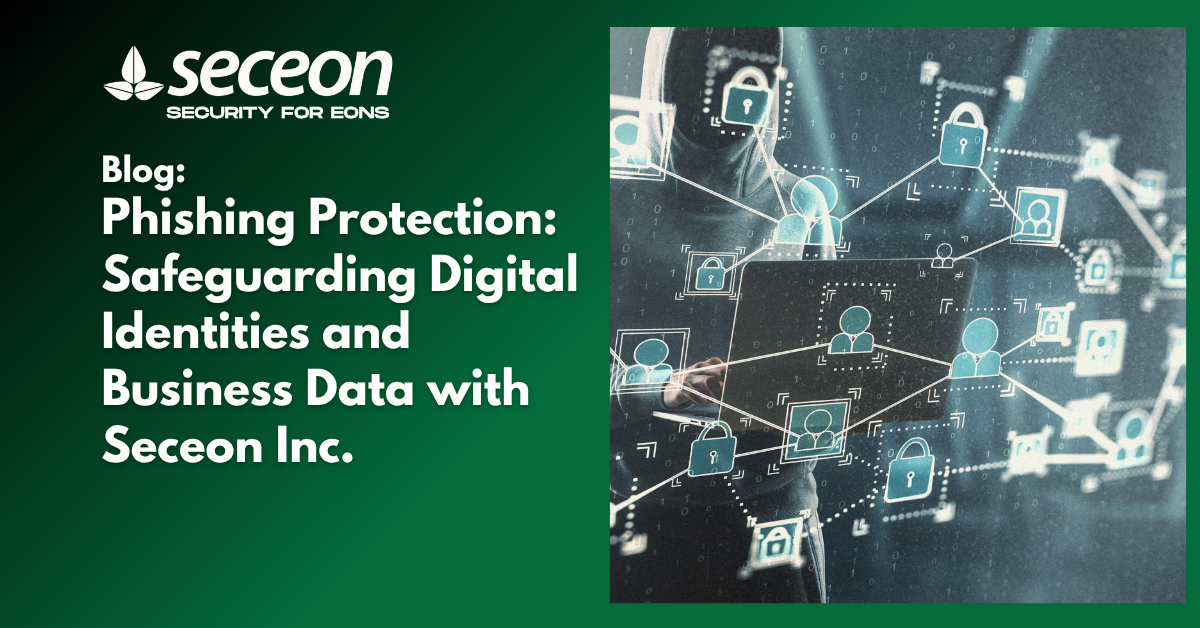
Phishing remains one of the most persistent and damaging forms of cybercrime in the modern digital landscape. According to the FBI’s Internet Crime Report, phishing was the most reported cybercrime in recent years, costing organizations and individuals billions of dollars globally. Unlike technical exploits that target vulnerabilities in software or infrastructure, phishing exploits human trust. Cybercriminals manipulate victims into revealing sensitive information such as login credentials, credit card numbers, or corporate secrets through fraudulent emails, websites, or messages.
Organizations of all sizes, from small businesses to global enterprises, are at risk. As phishing campaigns evolve to bypass traditional defenses, it is no longer enough to rely on spam filters or antivirus tools. Businesses need advanced phishing protection solutions powered by AI, threat intelligence, and automation to detect, block, and respond to these threats in real time.
At Seceon Inc., our aiXDR and aiSIEM platforms integrate phishing protection as a core defense strategy, enabling organizations to safeguard their employees, customers, and critical data assets.
Phishing is a cyberattack technique where malicious actors disguise themselves as trusted entities to trick victims into providing confidential data. This can include usernames, passwords, banking details, or business-related information. Phishing attacks are primarily executed through emails, text messages, or fake websites.
The core of phishing lies in social engineering—exploiting human psychology rather than breaking technical barriers. Attackers craft convincing messages, often using urgency, fear, or authority to manipulate recipients into clicking malicious links or opening infected attachments.
Phishing takes multiple forms, and organizations must be aware of these variations:
The most common form—attackers send mass fraudulent emails impersonating trusted companies or individuals.
Targeted attacks on specific individuals or organizations, often using personalized information.
High-level phishing attacks targeting executives like CEOs, CFOs, and directors.
An attacker replicates a legitimate email but replaces links or attachments with malicious ones.
Text messages with fraudulent links designed to steal information.
Attackers use phone calls to trick victims into sharing sensitive information.
Highly sophisticated schemes where attackers impersonate company executives to request fraudulent wire transfers.
Phishing campaigns follow a simple but effective process:
Organizations should train employees to recognize red flags such as:
Phishing protection requires a multi-layered strategy combining technology, training, and processes.
Deploy AI-powered email gateways to scan for malicious links, attachments, and spoofed addresses.
Regular phishing simulations and training programs help employees recognize and report suspicious activity.
Even if credentials are stolen, MFA ensures attackers cannot easily access accounts.
Modern browsers and endpoint security tools can block malicious URLs or downloads.
Leverage global threat feeds to block known phishing domains and campaigns in real time.
At Seceon Inc., we integrate phishing detection and prevention within our AI-driven cybersecurity platforms. Our solution is not a standalone tool—it’s part of a unified defense system that eliminates noise, automates responses, and strengthens organizational resilience.
Phishing protection becomes stronger when combined with Zero Trust Architecture. With Zero Trust:
Traditional anti-phishing tools often fail against modern, targeted attacks. AI-driven phishing protection offers:
1. What is phishing protection?
Phishing protection refers to tools, policies, and processes that prevent users from falling victim to phishing attacks.
2. Can antivirus stop phishing?
Traditional antivirus helps, but advanced AI-driven solutions are required to detect sophisticated phishing attempts.
3. What should I do if I clicked a phishing link?
Disconnect your device, change your passwords immediately, and notify your IT/security team.
4. Why do companies need phishing protection?
Because phishing is the #1 attack vector leading to ransomware, BEC, and large-scale data breaches.
5. How does Seceon help?
Seceon’s aiXDR and aiSIEM platforms automate detection and response to phishing threats, reduce false positives, and give organizations unified visibility across all attack surfaces.
Phishing attacks are not going away. In fact, they are growing more advanced, blending into the daily digital noise of corporate communications. To stay ahead, organizations must adopt AI-driven phishing protection solutions that combine automation, behavioral analytics, and threat intelligence.
Seceon Inc. empowers businesses to detect, block, and respond to phishing threats before they cause harm—restoring confidence, protecting customer trust, and ensuring compliance with evolving cybersecurity standards.
